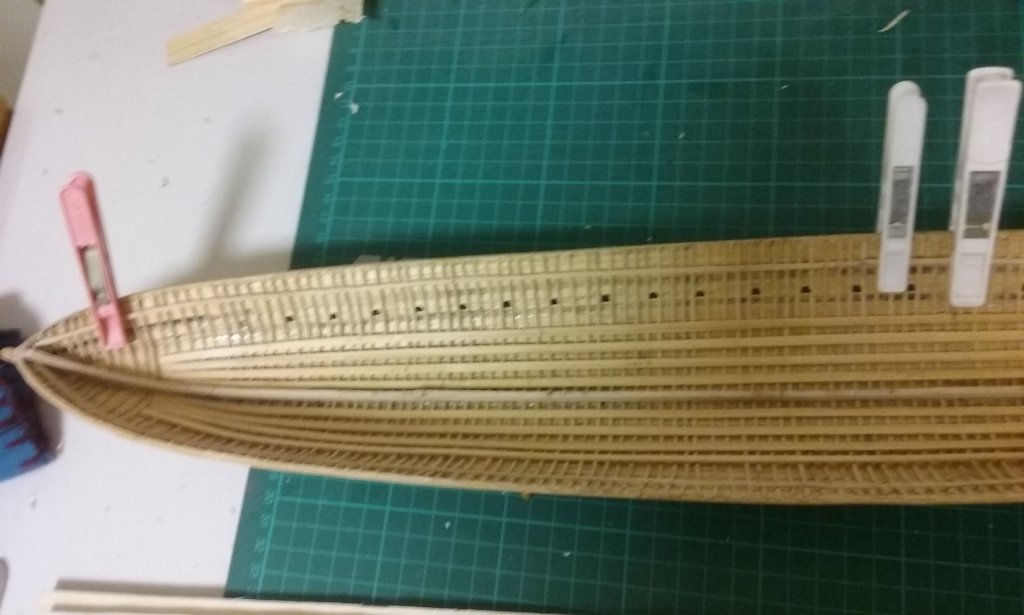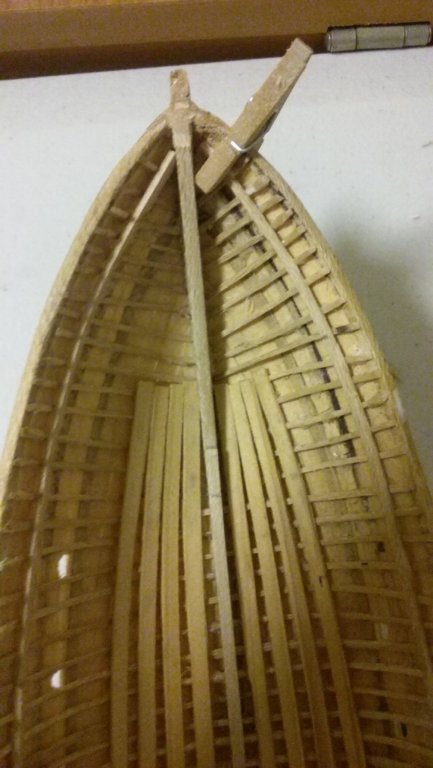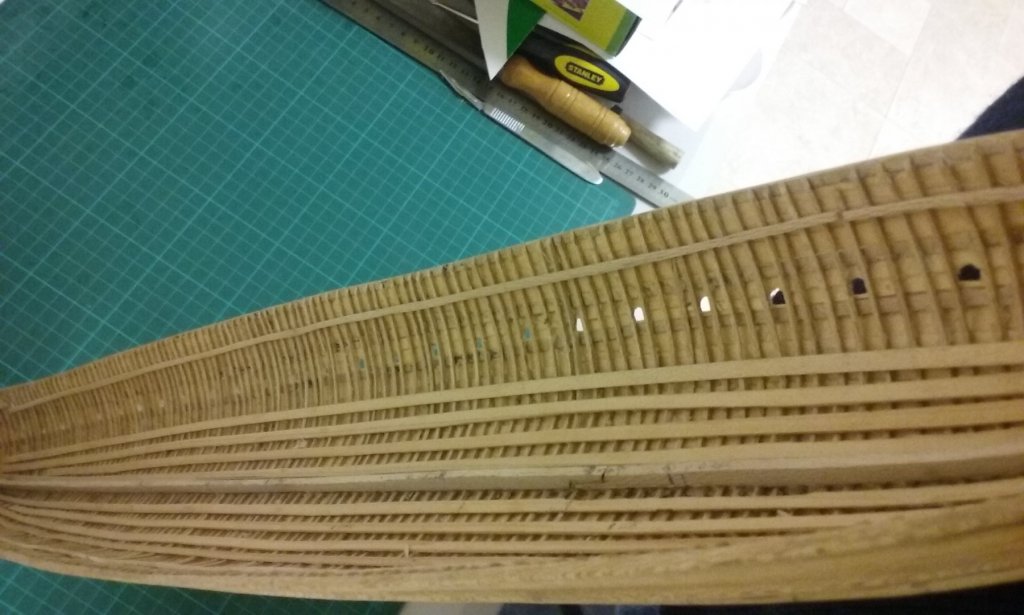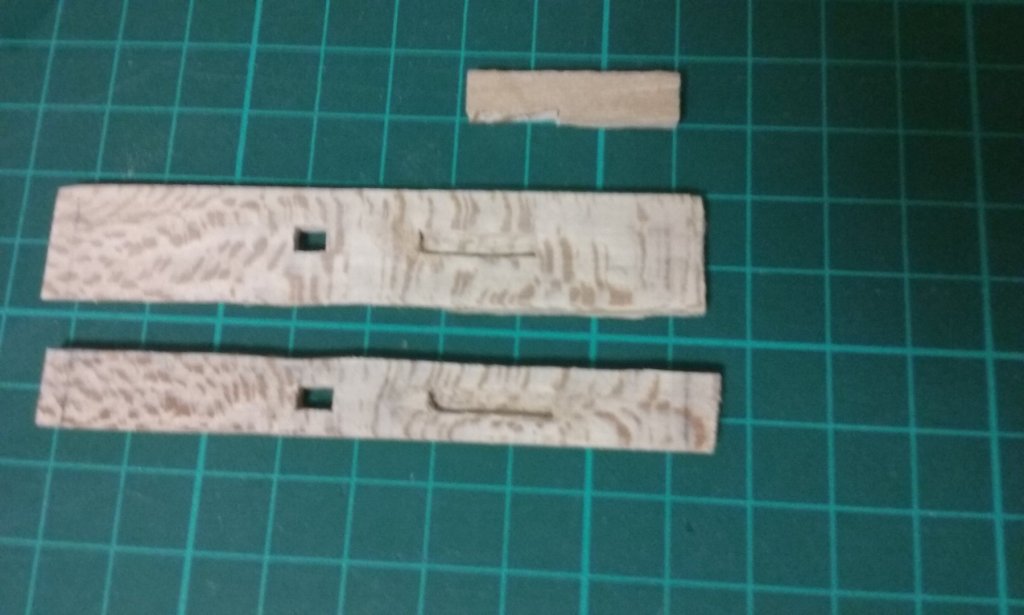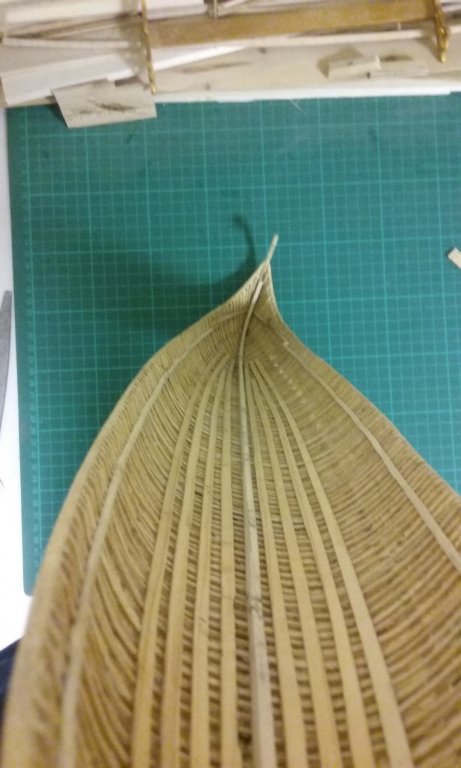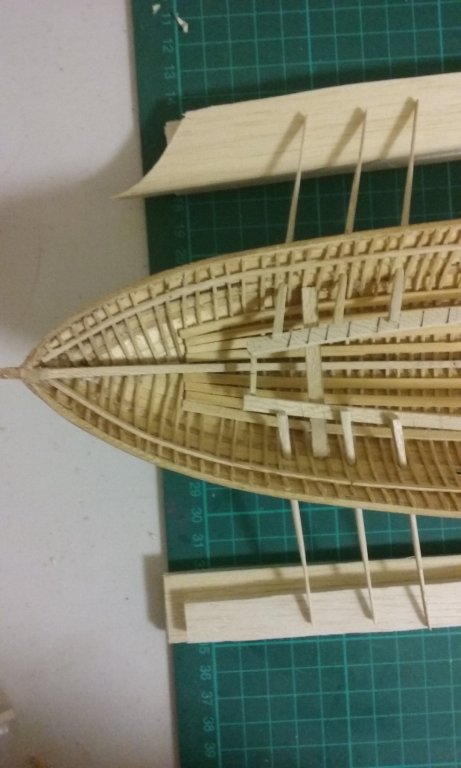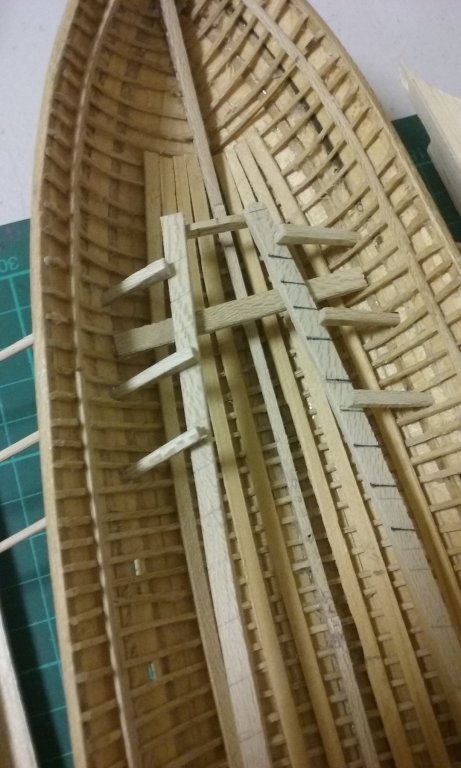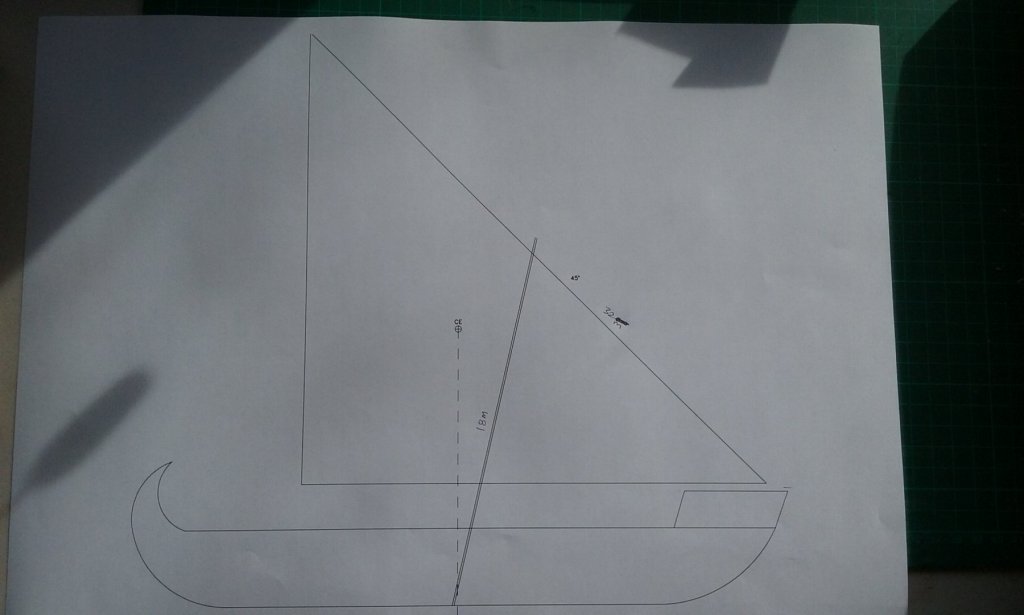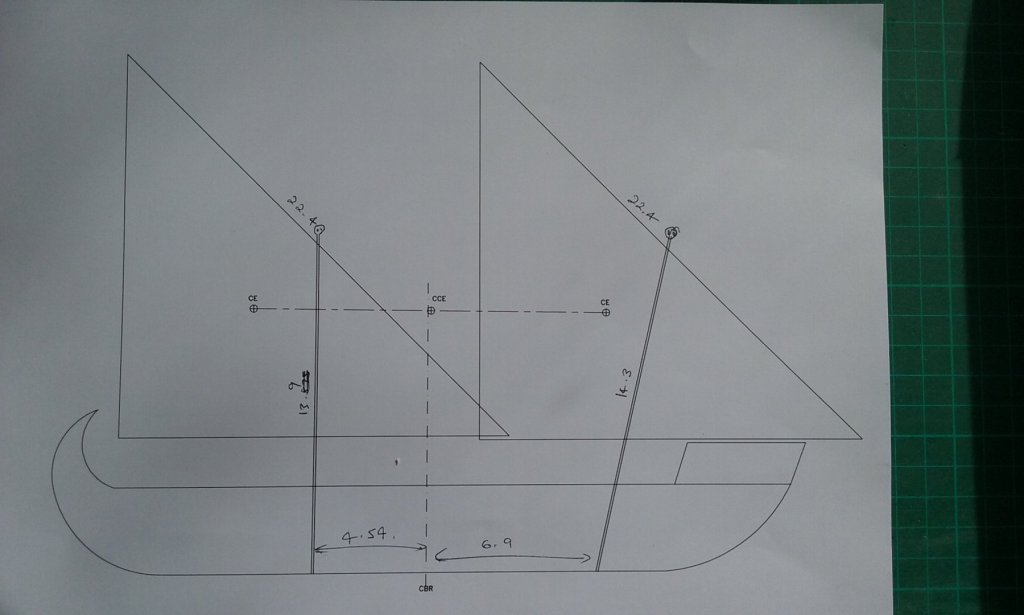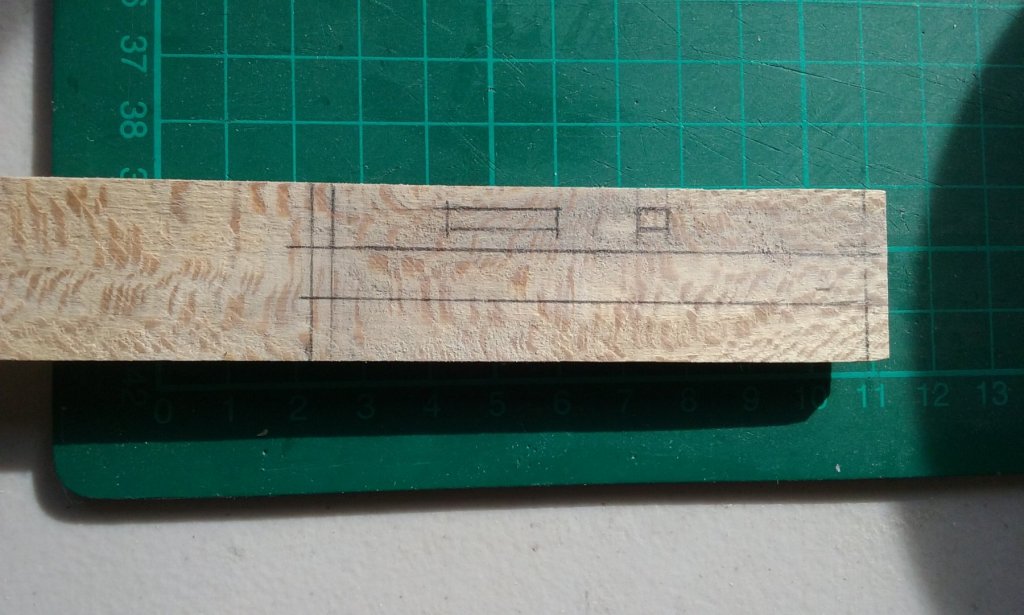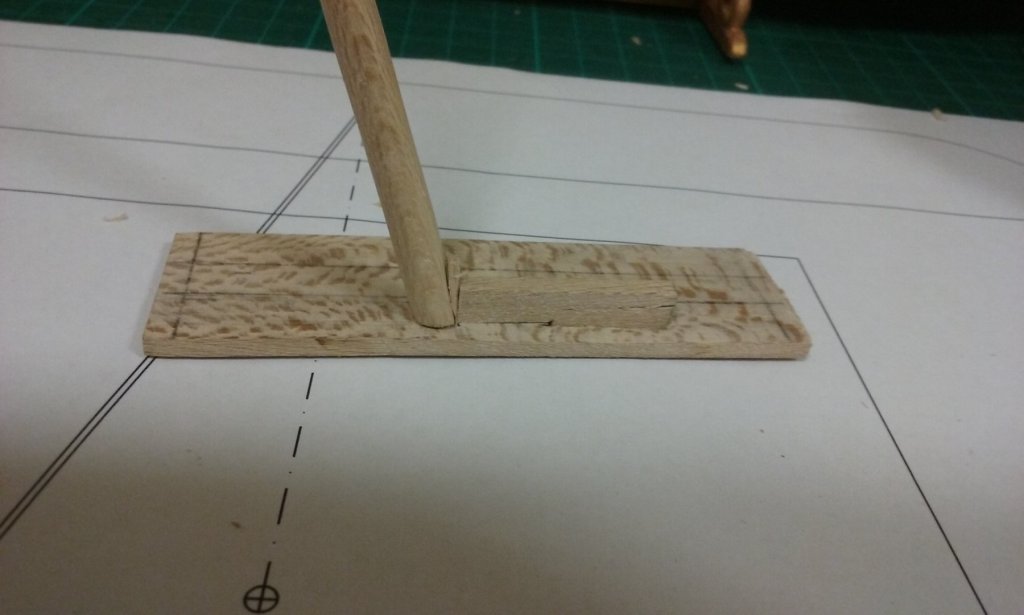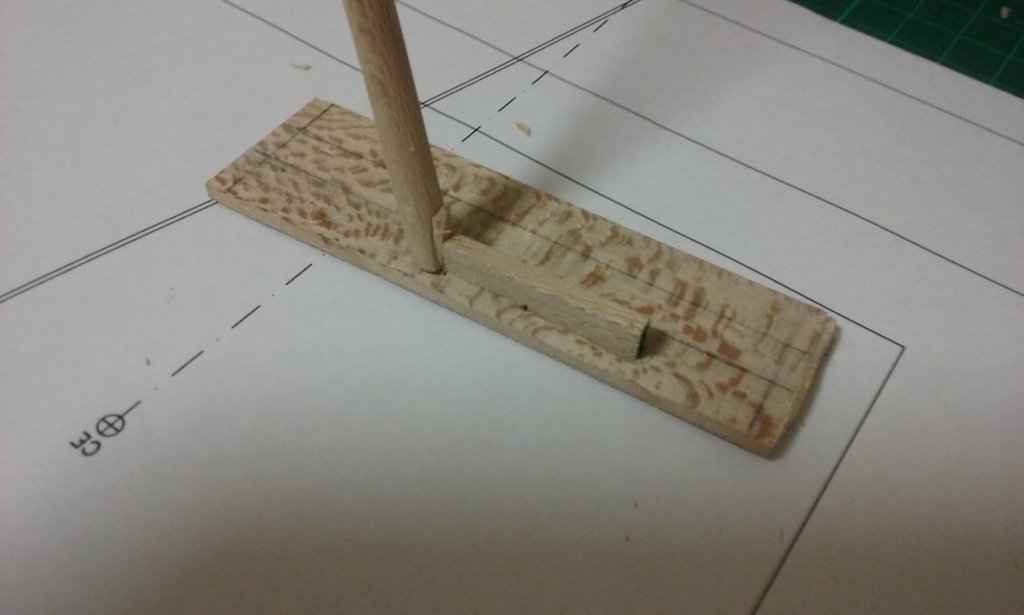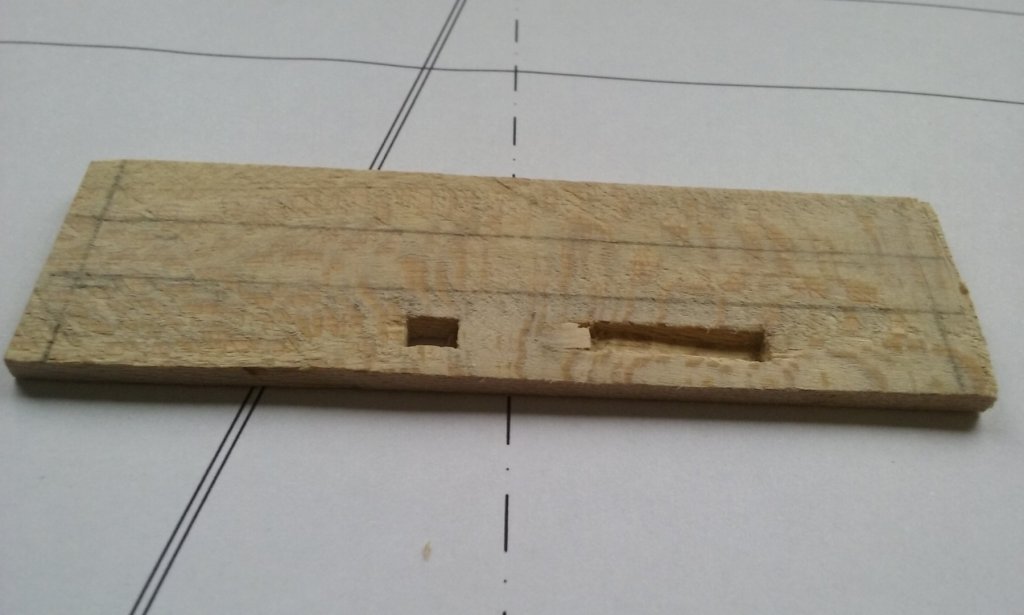-
Posts
7,973 -
Joined
-
Last visited
Content Type
Profiles
Forums
Gallery
Events
Everything posted by Louie da fly
-
Steve, that's a beautiful model of a beautiful vessel. With such high quality of workmanship it's hard to believe it's your first build. Steven
- 48 replies
-
- first build
- bowdoin
-
(and 2 more)
Tagged with:
-
Working on getting the beam shelf smooth. To be honest, the amount of wobble is pretty tiny - maybe 1/2mm - but it does make a difference. To smooth out the curve I've used all three techniques I mentioned earlier - slicing off where it was too high, filling where it's too low, and relocating the beam shelf where it's too far off the line to slice or fill. Still a bit to do before it's all smooth. Next time I do something like this I'll make sure I get it right first time so I don't have to get into this whole correction thing, which wastes time and effort. A lesson learnt (I hope!). Steven
-
Nice work, Patrick. I like the way you've fixed the guns. They'll certainly never come loose! (and as you say, the screws will be invisible). Beautiful detail work, as we've come to expect from you. Steven
- 756 replies
-
- galleon
- golden hind
-
(and 2 more)
Tagged with:
-
Carl, It looks like you replied while I was in the middle of editing my post above to add another photo and two links, which I hope are of help. Steven
- 292 replies
-
- g class destroyer
- trumpeter
-
(and 4 more)
Tagged with:
-
I feel the same way, Lou. The ABDA force didn't achieve their aim to stop the Japanese invasion. But they were a scratch force flung together from widely disparate navies with no opportunity to train together or work out a common strategy and tactics - not to mention the language problem! They knew they were outgunned and outclassed, but answered the call with heroism that is hard to contemplate in today's world. Not forgetting the Jervis Bay. https://en.wikipedia.org/wiki/HMS_Jervis_Bay Carl, try doing a google image search on HMS Glowworm - several of the photos that are fairly small in the above links can be found larger and with better detail by doing this. Steven PS: Just found another one! and links to higher definition photos - https://i.pinimg.com/originals/cb/1c/70/cb1c700a04541ee2356ef9efa0c5439a.jpg and https://i.pinimg.com/originals/48/84/69/4884695873e57a0ef98a10aaa8697b78.jpg .
- 292 replies
-
- g class destroyer
- trumpeter
-
(and 4 more)
Tagged with:
-
Just did a bit of a Google search for pictures of the Glowworm. There's some good ones at http://navalwarfare.blogspot.com/2009/06/hms-glowworm-h92.html https://wrecksite.eu/wreck.aspx?15989 and http://forum.netmarine.net/viewtopic.php?t=3502 (this one's in French, but Google Translate should help if needed - unless you're already fluent, of course. Zut! Alors . . .) and Russian . . https://u-96.livejournal.com/2670604.html with at least one photo the others don't have. Plus these two I hope these help. Steven
- 292 replies
-
- g class destroyer
- trumpeter
-
(and 4 more)
Tagged with:
-
Nice work, Javier, particularly at such a small scale. I suppose the skids on the bottom are to help run the boat up onto the beach (which is large flint pebbles, if I recall correctly). Looking forward to following your progress on this one. Steven
- 11 replies
-
Thanks, Mark. But the shelf needs to follow a smooth curve to get the deck to be consistent, otherwise the deck itself will be all wobbly. Steven
-
This wee sleekit cow'rin' tim'rous beastie looks forward to following the progress of your cunning plan. Steven
- 263 replies
-
- nave tonda
- round ship
-
(and 2 more)
Tagged with:
-
Beautiful work, Michael. A real pleasure to watch this build. Oh, and I take comfort from the fact that even someone at your advanced level sometimes misses something (the attachment of the vent stack). I don't feel quite so embarrassed about my own boo-boos. Still embarrassed - I've got a long way to go before I even approach your level of skill - but not quite so embarrassed. Steven
- 749 replies
-
- albertic
- ocean liner
-
(and 2 more)
Tagged with:
-

HMCSS Victoria 1855 by BANYAN - 1:72
Louie da fly replied to BANYAN's topic in - Build logs for subjects built 1851 - 1900
Very nice work, Pat. Steven- 993 replies
-
- gun dispatch vessel
- victoria
-
(and 2 more)
Tagged with:
-
Or a lot of rice. Off the subject a little, but still on the subject of measurement, an acre is an Anglo-Saxon measure of the amount of land that can be ploughed with a two-horse(?) plough in a day . . . (don't ask me about chains and perches and roods, let alone gills and bushels). And the values of measurement units differed from time to time and from place to place, such as the French, Dutch and English values for the foot. When they built the Olympias trireme reconstruction they used one value for an Ancient Greek unit (I think it was the cubit) but discovered in practice they would have been better using a slightly larger value from a slightly different time period, as there wasn't really enough room for the oarsmen (and women) to work the oars without interfering with each other. And the Byzantines had the same thing with their various measures - palm, finger, hand etc. They kept changing, making it very difficult for historians to work out the sizes things had been. Steven
-
I've done a preliminary fitting for the support system I'll be using for the lower oars, to see if it will work. A number of cross-members hold at the correct height a frame with a series of lines all at the same angle, as guides for the oars. The oars go through the oarports with the inner end resting on the frame and the outer end resting on a raised plane (currently two thicknesses of balsa wood) to simulate water level. I've done my best to get all the oars as close to identical as possible, so they'll all be at the same angle vertically when they rest on the frame. Also, they'll be interchangeable so it doesn't matter which one goes where. The other quantity that has to be kept constant is how far the oars poke out from the hull, which is done by simply drawing a pencil line around the circumference of each oar at the point it goes through the oarport. I've only tried it with three pairs of oars so far, but it looks like it will work. Now to get it all done properly, with everything lined up and glued in place. As I mentioned before I won't be putting the oars in till later on in the build so they don't get damaged while I'm working on other parts of the ship. The two mast steps are still in progress - I'm making them like the ones found in the Yenikapi ships. Though they're more complicated than my original version I think it's good to do it the way it was done back in the day if at all possible. The blocking piece is shown above the two mast steps. Sorry about the photo quality. At some point I have to correct the line of the beam shelf - it's a bit wonky and has to be made into a smooth line, or the deck beams - and the deck itself - will also be wonky. As can be seen in the photos, the line wobbles very slightly all along its length. As the beam shelf so narrow and flexible, I can probably correct it by cutting it away from the frames at the offending places and re-glueing it in the correct position. If not, I'll have to cut and fill till it's correct. Steven
-
So it's the millimetre rule you're working from? Not the series of vertical lines drawn on the background sheet? Steven
- 263 replies
-
- nave tonda
- round ship
-
(and 2 more)
Tagged with:
-
That's a really nice jig, Dick. Simple and effective. As you're moving only one side of the jig and keeping the other side static, I take it you've arranged the graduated distances on the background to compensate for the lack of symmetry. Are the second two photos above identical ? I can't see the difference between them. Steven
- 263 replies
-
- nave tonda
- round ship
-
(and 2 more)
Tagged with:
-
That's a good reason to go two-masted, Mark. Galleys in general are not too stable. I think sail would be preferable while journeying - assuming the wind was in the right direction, so the ship wouldn't heel over too much. Oars definitely under battle conditions - in fact the masts were lowered and stowed. For maneuvrability and also to remove overhead hazards. Steven
-
Mark, the single mast cE is about 2.2 metres (7 feet) taller than the double - the difference between 9.4 and 7.2 metres above the bottom of the ship - about 30% higher. Don't know how much difference that would make. Steven
-
Here are the sail plans I've arrived at - I still haven't decided to go one or two-masted, but both look better than previous versions. The dimensions no longer tie in with those of Age of the Dromon - I've decided that a gap of 200-300 years and different shipbuilding traditions, plus the different form of the two types of ship are enough to discount the Sicilian ships as a source of information. Instead, I'm going with size and placement of sail(s) to achieve the position of Centre of Effort needed to make a lateener sail properly, based on the theory outlined on the previous page of this build log. I've also made a prototype of the Byzantine mast step assembly shown in my reconstruction diagram above. I did this in a hurry and in a poor light, so it's a bit rough. To put in the model I'll do a better job and make it complete - cutting it to width and with side pieces to hold it on the keelson. But it seems to work! Steven
-
Makes sense, Dick. The narrowing of the hull gets greater in a nice smooth curve as you approach the bow and stern. Presumably the same with the rise of floors etc. Clever. Steven
- 263 replies
-
- nave tonda
- round ship
-
(and 2 more)
Tagged with:
-
Oh yes, I knew what the words meant - just don't know the ins and outs of the technique. Steven
- 263 replies
-
- nave tonda
- round ship
-
(and 2 more)
Tagged with:
-
That makes sense, though I thought it might also affect the performance of the sail (messes with the aerofoil shape). I expect in large, state-owned ships they'd have taken the trouble to move the end of the yard to the other side of the mast whenever they tacked, as shown in the diagrams on the first page of this thread. Sporting sailors probably don't have to worry about it so much because they don't use their boats much. However, the skipper of the caravel replica that sails around the coast in our region says he does it "the way the Arabs do" - without changing sides when he tacks. A lot less hassle, but it does have the downside of chafing. Steven
-
Just learnt something. I'd thought than on all lateen sails the halyard attached to the centre of the yard. Certainly a lot of them seem to be this way in contemporary pictures, but if you look at the link http://forum.woodenboat.com/showthread.php?156203-Lateen you can see lateens with what I'd have thought was a very unbalanced set-up. Oh, and some nice footage of lateeners under sail. Having the mast to leeward of the sail (so it's blown against the mast) doesn't seem to be such a problem after all. A pity there isn't any footage of boats sailing under lateen alone, without headsails (or booms, as some modern so-called "lateens" are). Steven
-
Very interesting, Carl. I haven't come across this one before. Certainly lateen rigged, and the "wings" at the stern are thought to hold a crosspiece which supports the yard when it's not in use. The hull is very unusual. I wonder where they got the design from? It doesn't look like anything I've seen in contemporary pictures. But there's plenty of stuff out there I've never seen. Steven
About us
Modelshipworld - Advancing Ship Modeling through Research
SSL Secured
Your security is important for us so this Website is SSL-Secured
NRG Mailing Address
Nautical Research Guild
237 South Lincoln Street
Westmont IL, 60559-1917
Model Ship World ® and the MSW logo are Registered Trademarks, and belong to the Nautical Research Guild (United States Patent and Trademark Office: No. 6,929,264 & No. 6,929,274, registered Dec. 20, 2022)
Helpful Links
About the NRG
If you enjoy building ship models that are historically accurate as well as beautiful, then The Nautical Research Guild (NRG) is just right for you.
The Guild is a non-profit educational organization whose mission is to “Advance Ship Modeling Through Research”. We provide support to our members in their efforts to raise the quality of their model ships.
The Nautical Research Guild has published our world-renowned quarterly magazine, The Nautical Research Journal, since 1955. The pages of the Journal are full of articles by accomplished ship modelers who show you how they create those exquisite details on their models, and by maritime historians who show you the correct details to build. The Journal is available in both print and digital editions. Go to the NRG web site (www.thenrg.org) to download a complimentary digital copy of the Journal. The NRG also publishes plan sets, books and compilations of back issues of the Journal and the former Ships in Scale and Model Ship Builder magazines.



